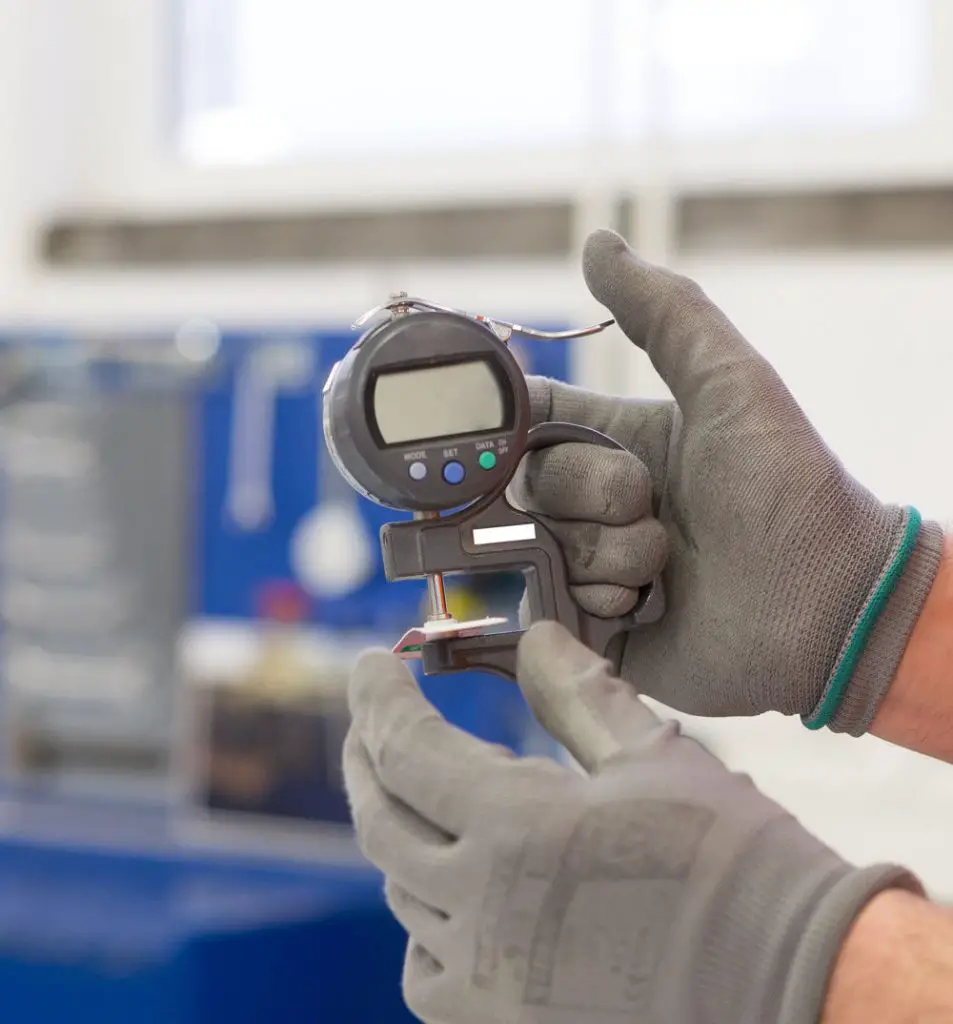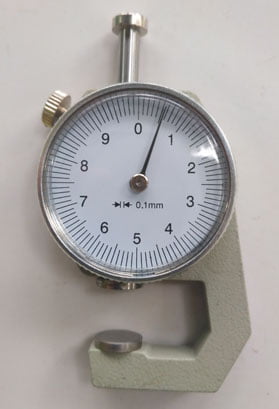There are some tools to measure paper thickness: rulers, calipers, micrometers, and thickness gauges. All these tools surely have advantages and disadvantages. In this page, we are going to review those tools and the ones we recommend including the specific products.
Why Measure Paper Thickness?
The thickness of papers obviously determines the quality and durability of our printing projects (such as books). Unsurprisingly, we need to measure the thickness of the papers first to select the right one. Selecting the right paper thickness for the project is an undeniable thing to get a satisfying result.
When we are going to print a book or any printing project, it’s not an astonishing fact that there are a lot of paper types available to choose. And, we have to choose, one of them. In this case, we can ask the sample of each paper type to see which paper we really desire. Afterward, after you receive the paper sample, you have the chance to select the paper based on the thickness.
Tools to Measure Paper Thickness
There are some tools used to measure the thickness of a piece of paper. We can use ruler, caliper, micrometer, or the special tool for this kind of work “paper thickness gauge”. Actually, thickness gauge is similar to micrometer however there is a little improvement and this instrument seems to be designed for measuring the thickness of sheet objects.
Tools to measure the thickness of a paper sheet should match this criterion. It provides good accuracy. Because a paper sheet is thin, a great resolution that the micrometer provides will matter significantly to the accuracy. Further, the tool has to measure without any vivid error. Don’t overpress the paper. If the pressure given by the tool to the paper is too strong, the measurement is inaccurate. Similarly, if the pressure is too weak, it is inaccurate as well.
In addition, the measuring faces that contact the paper have to be no twisting. This can happen when we use screw micrometers. A typical screw micrometer has the spindle that rotates when it grips the object. If the rotation and twist are giving too strong force, it will damage the paper itself. Otherwise, that’s good.
So, there are three things to put into consideration when choosing the correct tool for paper thickness measurement: 1. Accuracy 2. Appropriate Pressure 3. Non-rotating Spindle 4. Range.
1. Ruler
We can use a ruler to get the thickness but this way is not highly recommended due to inaccuracy. To measure it is really simple. Put together a sufficient amount of paper, measure the thickness, then divide by the total of paper sheets. You will get the thickness of each paper sheet. Suppose that each paper has the same thickness for all.
There is a ruler that seems pretty good to use in this case. It’s General Tools 300/1 ruler that is designed with a sliding pocket clip. This feature can adjust the ruler to become a depth gauge.
2. Metal Sheet Thickness
Metal sheet thickness is actually the tool to measure the thickness of metal. It shapes like a short ruler. However, we could use it for paper measurement but not really recommended like the ruler above.
3. Caliper
Caliper is one of the measuring instruments that we can trust to measure paper thickness. It has an accuracy of up to 0.001″. It has two jaws to hold the paper and you can read the reading. Measuring the paper thickness with a caliper can be done with a piece or a bunch of paper.
The advantage of using a caliper to measure paper thickness lies in the range where a caliper can support until some inches long in range. Moreover, using a caliper can speed up the measurement process.
4. Micrometer
For better accuracy with a deeper resolution, the micrometer is the tool you require. However, it doesn’t mean all the types of micrometers can be used for paper measurement.
One thing to take into consideration is the spindle. In this case, the micrometer that doesn’t rotate is ideal to choose from. The spindle will move axially when it’s attempting to secure the object being measured. This is important because the non-rotating spindle will not damage the paper.

Moreover, we have to take a look at the anvil. It’s preferred to use a disk micrometer. Mitutoyo 169-101 is one of the products that provide a disk anvil and a non-rotating spindle. Try to reduce the surface that contacts each other as much as possible. This is important to reduce possible errors.
Another micrometer that will convince you in terms of better paper measurement is the micrometer with a deep-throated frame. The unique frame allows you to measure the thickness at any point you want on the paper both around the center or edge.
Using a micrometer to measure paper thickness also means considering the maximum thickness that it can excess. Most micrometers that we find on the market are those whose 1-inch range. If you prefer measuring the paper thickness piece by piece, it’s okay. Otherwise, you require another micrometer with a greater measuring range.
Further read: Top 12 Best Micrometer Reviews
5. Thickness Gauge

This measuring instrument will provide you with a better experience during the measurement of paper thickness due to its non-rotating spindle and flat measuring faces. These features are important to gain an accurate measurement. Basically, this tool is to measure any sheet-shaped object. It may be metal, plastic, cloth, thin film, and certainly paper.
A thickness gauge basically works like a micrometer. However, there is something different. Thickness gauges are available in the dial and digital type only. The thickness measurement range is limited, more limitedly than the micrometer. The way we use it is also different. On the image beside is an example of a dial micrometer.
To get a better result, try to find the thickness gauge with an improved resolution, deep throat, and digital reading.
6. Ultrasonic Thickness Gauge
Ultrasonic thickness gauge lets you easily measure the thickness of any object using touch only by one side. In other words, you don’t need to reach the entire side of the object. This is actually for coating thickness measurement, but we can use it and benefit from its accuracy.
Recommended Tools
We’ve discussed some factors that need to consider selecting the tool for measuring the paper thickness. Also, we’ve explained the tools that fulfill those considerations. We have a big hope that this post may help you decide which tool to pick.


How to measure on line caliper of individual plies before they are all joined together in a multi wire Fourdrinier